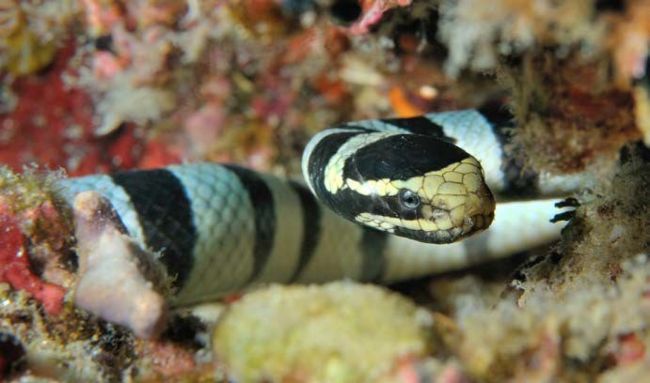Changing vision
Sea snakes first entered the marine environment some 15 million years ago, and have been evolving ever since to survive in its changing light conditions, according to a new study. Research led by the University of Plymouth in the UK has for the first time provided evidence of where, when and how frequently species have adapted their ability to see in colour.
It suggests sea snakes' vision has been modifying genetically over millions of generations, enabling them to adapt to new environments and ensuring that they can continue to see prey and predators deep below the sea surface. In an unexpected twist, the findings also indicate that diving sea snakes actually share their adaptive properties not with other snakes or marine mammals, but with some fruit-eating primates!
Rapid development

The colour vision of sea snakes has evolved very differently, compared with that of marine mammals such as seals or whales.
Photo courtesy Rich Carey/
www.shutterstock.com